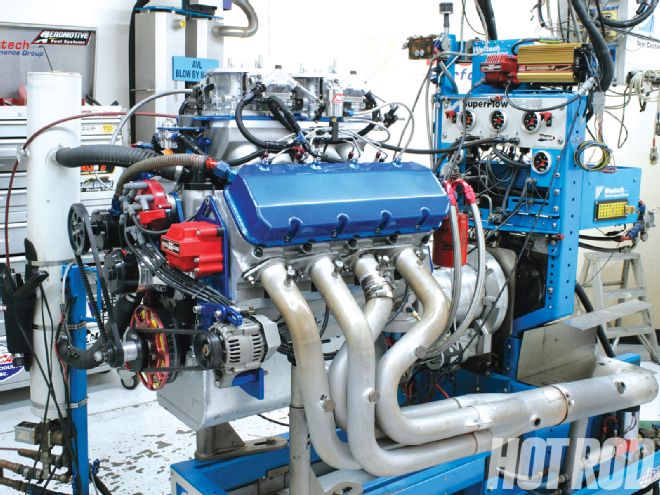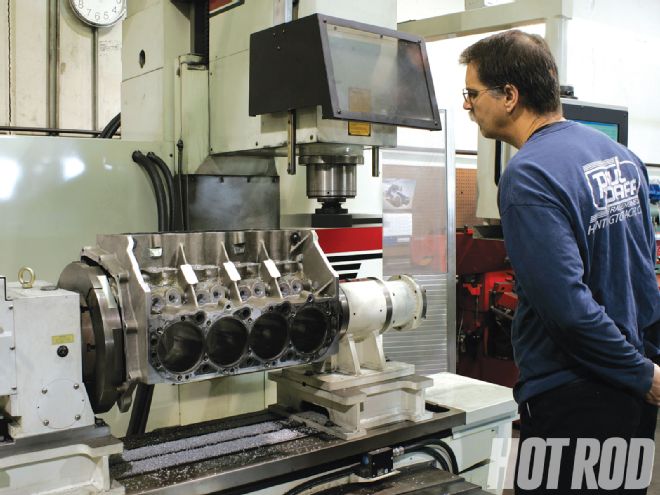
NHRA Pro Stock racing is the end-all, be-all class for flexing the might of a big-block race engine. With no power-adders allowed, this is the class in which a huge budget, massive engineering efforts, and ingenuity rule the roost and the guy with the most power has a very real advantage over the competition. That competition has led to significant advances in induction technology and power production from 500ci engines over the years. Our best guess puts the horsepower output of the top engines in the class near the 1,450hp mark at 10,600 rpm, and some of the cylinder head chamber and port design information that makes it possible has been trickling down to sportsman racers in the last few years.
 <strong>The Long-Block</strong><br />
The tall-deck Brodix aluminum block is a stout piece that features splayed-four-bolt billet main caps, extra head stud bosses in the lifter valley, and cast-iron liners that can be safely bored up to 4.630 inches. Our block was machined at Paul Pfaff Racing Engines by Paul Higgins. It was decked to 10.182 inches, bored to 4.602 inches, and fitted with Jesel bronze lifter bushings to prevent wearing out the bores.
<strong>The Long-Block</strong><br />
The tall-deck Brodix aluminum block is a stout piece that features splayed-four-bolt billet main caps, extra head stud bosses in the lifter valley, and cast-iron liners that can be safely bored up to 4.630 inches. Our block was machined at Paul Pfaff Racing Engines by Paul Higgins. It was decked to 10.182 inches, bored to 4.602 inches, and fitted with Jesel bronze lifter bushings to prevent wearing out the bores.
Thankfully, the proliferation of aftermarket cylinder head manufacturers has paved the way for the average guy to build ridiculous amounts of power using some of this induction technology. Today, we can get the weight savings of aluminum, very efficient CNC-finished chambers and ports, rolled valve angles, and a race-level valve job without having a name like Edwards or Anderson on our credit card bill. The results are out-of-the-box flow rates that rival the best max-effort, top-secret race heads of the last decade. The spread-port, 582ci Chevy we built in this story is a good example of what can happen when you combine one of many commercially available Pro Stock head designs with great supporting parts and no rules restricting displacement.
We built the engine at home and it cranked out 1,164 hp on the dyno without the direct-port nitrous system in play. The beast puts out more than 1,000 hp at 6,000 rpm, and by 6,700 rpm, it eclipsed the 1,100hp mark. You want torque? How about 889 lb-ft at 5,800 rpm? We also hit it with a medium dose of nitrous and gained another 348 hp and 349 lb-ft. And the entire package weighs just 650 pounds.
It's not an easy build, though, as none of the parts were bolted in place without some massaging to get the most out of the combo. It also requires more attention to detail than your average street engine. Due to the high-lift cam profile and extreme spring pressure required to control the valves, the valvetrain is checked on a regular basis. Make no mistake-from carb to pan, this is a full-tilt drag engine that lives on VP C-16 fuel. Let's have a look inside, shall we?